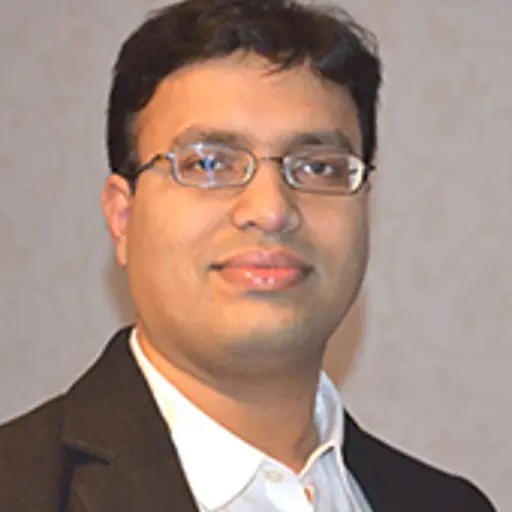
Saroj Dash, Professor at Quantum Device Physics, is awarded the Wallmarkska Prize 2023 by the Royal Swedish Academy of Sciences for his "groundbreaking research on spintronics in new 2D layered materials, not least graphene, as well as topological and magnetic layers." The research is now expected to play an important role in the development of the next generation of computers.
Hi Saroj – and congratulations! What was your reaction when receiving the news about the award?
“The Wallmarkska Prize 2023 from the Royal Swedish Academy of Sciences came as a pleasant surprise and I am incredibly grateful and humbled for this award. It is a great honor and a recognition of the importance of our research work on spintronics and quantum devices using 2D quantum materials such as graphene, topological and magnetic materials. It will encourage our group to continue groundbreaking research work for future information and communication technologies and make a meaningful impact in society.
I would like to express my heartfelt appreciation to Royal Swedish Academy of Sciences for this award, and for the invaluable support and resources from Sweden and European Union that have enabled us to pursue this fascinating research for over 10 years at Chalmers. I want to thank all my past and present group members, colleagues, and collaborators who have played an instrumental role in our research work. Most importantly, I would like to thank my family and friends who have always been my unwavering source of support and encouragement.”
What does this award mean to you and your research?
“This award brings excitement and optimism about our research on 2D quantum materials based electronic device, and our commitment to understand the basic science and applications of these new devices for future information technologies. It will bring larger attention towards the research field, highlighting the importance of the research and its potential application potentials. In Sweden, we definitely need to invest more resources on 2D quantum materials and device physics research as this has the potential for new discoveries and innovations for future information technologies. This is urgently needed to tackle the rise in the use of computers, mobiles, internet, and artificial intelligence. We believe this increased visibility can attract more funding, resources, and collaboration opportunities, enabling us to further explore and push the boundaries of the 2D quantum materials-based device research."
Can you tell us a little bit about what your research group is focusing on right now?
“Our current research address different novel aspects of condensed matter physics using nanoscale devices covering different areas of research within electronics, spintronics, and topological quantum device. In the case of electronics research, the objective is to develop atomic scale transistors, which are incredibly small, allowing for faster and more efficient computing. On the other hand, spintronic research uses the spin degree of freedom of electrons to create new types of computer memory and processor that retains its data even when the power is turned off. Furthermore, topological quantum materials-based device research aims to develop future topologically protected quantum computers that are expected to be powerful and resilient to errors and disturbances. These different areas of research are focused on advancing electronics and computing technologies and have the potential to contribute to significant breakthroughs in the field.
To realize these goals, we are utilizing advanced 2D quantum materials and their hybrid structures for different electronic, spintronic and quantum devices. Our research is very interdisciplinary and includes various aspects of Physics, materials science, and electrical engineering. This includes research from very fundamental understanding of the Physics of the new 2D materials and their nanoscale devices to advanced characterization techniques at different temperatures, magnetic fields, and frequencies we developed at Quantum Device Physics Laboratory at Chalmers. Advanced 2D quantum materials characterization is performed at synchrotron facility at Max-IV Lund and nanoscale device fabrication are performed at MyFab Nanofabrication laboratory at Chalmers.
Our group is quite international with several postdocs, PhD, and Master thesis students. We strongly collaborate with different experimental and theoretical research groups worldwide and industries with complementary expertise. Chalmers provided an ideal platform for such interdisciplinary research on 2D quantum devices with strong collaboration among different research groups in different departments and spanning across different Areas of Advance programs such as Nano, Materials and Energy. Our research is part of European Union’s Graphene Flagship and Flag-ERA projects, VINNOVA competence center 2DTECH, Swedish Research Council projects and Wallenberg initiative on Materials Science for a Sustainable World (WISE)."
- Full Professor, Quantum Device Physics, Microtechnology and Nanoscience
